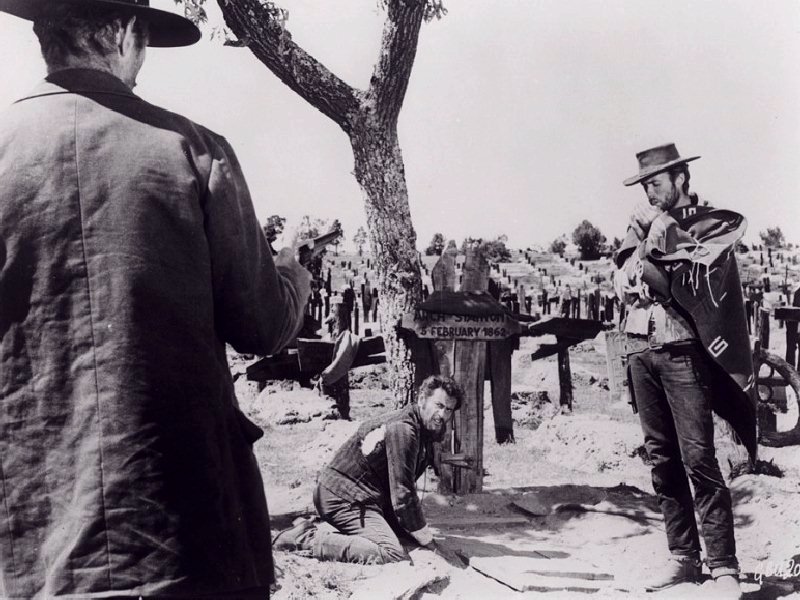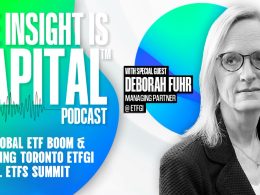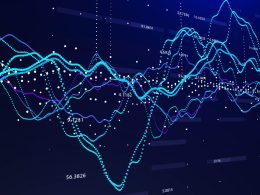by Liz Ann Sonders, Chief Investment Strategist, Kathy Jones, Head of Fixed Income, Charles Schwab & Company Ltd.
LIZ ANN SONDERS: I'm Liz Ann Sonders.
KATHY JONES: And I'm Kathy Jones.
LIZ ANN: And this is On Investing, an original podcast from Charles Schwab. Each week, we analyze what's happening in the markets and discuss how it might affect your investments.
Hi, Kathy. Well, no surprise this week, we've been talking about tariffs. Everybody's been talking about tariffs, and at least some of them are delayed, postponed, whatever term we're going to use, not in the case of China. But I'll start with you. Can you talk a little bit about how the bond market has reacted to the announcements this week and potentially what that means for the chances of a Fed rate cut this year?
KATHY: Yeah, Liz Ann, it's been all about tariffs lately. And I think the bond market's confused. So initially, what we saw was some flattening of the yield curve, meaning short-term rates edged up, and long-term rates kind of held steady or even declined a little bit. And that's a pretty logical reaction to the idea of tariffs because the rise in short-term rates would reflect the idea that tariffs give you a price increase on imported goods, and that would limit the Fed's ability to cut interest rates. So short-term rates have been discounting a couple more rate cuts. Now the initial response is "Well, maybe that's not going to happen," but tariffs eventually—because they're usually retaliatory tariffs—slow growth, and so long-term rates really didn't respond the same way.
Now we've been back and forth and back and forth and back and forth as this is the various iterations of where we are in this trade war, if you want to call it that. So the bond market is, I would say, just confused right now and trying to find its way. And that's probably also reflected in the comments we're hearing from, you know, officials at the Federal Reserve. They're saying, "Well, we're in no hurry because inflation is still above our target, and the economy looks OK. But we are waiting for clarity on all these things that are going on, not just tariffs and trade policy, but fiscal policy issues, regulatory things, immigration." They're trying to figure out how all these pieces will fit together and how it will impact the economy and inflation. And frankly, I don't think they have a better view than any of the rest of us right now as to what that is. So I think it puts them on hold for quite a bit longer. We've been saying we didn't think there was much scope for Fed rate cuts in the first half of the year. This may put them on hold for the entire year. It really just depends on how things turn out. And right now, I don't think anybody is able to really, with confidence, say how is this all going to work out. So what about you, Liz Ann? What's your take on all this?
LIZ ANN: Well, I can say without any confidence that I don't know what's going to happen. So that's my segue from some of what you just discussed. You know, I think maybe the most important page we can pull from the 2018 playbook is the learnings that President Trump is predictably unpredictable. And so there, I think, will probably continue to be gives and takes and delays. And I think that could easily be, I think it's kind of a no-brainer to assume that that means some short-term volatility in the market, much like we have already seen this week with a big pre-open downturn in the aftermath of the announcements, particularly that they were going to take place ASAP. In the case of Canada, Mexico, as we already touched on, those got delayed, but even throughout the course of that first trading day, you saw an attempt at moving back into positive territory, but then stocks sold off again. Then as we're taping this on Wednesday, yesterday, Tuesday, was a better day. Today as we're speaking, a less good day. Again, we're taping this on Wednesday. This is airing on Friday. That's a lifetime. And we can get a little smile about how rapid moving information is these days on tariffs and pretty much on anything, but it's an important time to remind investors that you have to be really mindful of not feeling compelled to trade around a lot of this, around the headlines, around the noise. If anything, this is a time where we should reinforce long-term goals and investing based on those long-term goals, not trying to trade around the gyrations of news really on any topic.
But all we can do is take the information as we have it and try to assess the math associated with it. And that's our role is to be objective and look at the data and the math. For some of that math, a lot of the details around what could this potentially mean for U.S. economic growth, for U.S. inflation, I would point everybody to—our listeners anyway—to the pretty comprehensive report that Kevin Gordon and I wrote that published on Monday, and we will put a link in the show notes to that. And then just after this, Kathy, I am taping my monthly Market Snapshot video also on tariffs. And one of the things that I did with a little bit more detail in the video, or I will be when I tape it, is look at some of the industries that are most impacted in the United States relative to trade with Mexico, with Canada, and with China. So there is some meat on the bones with numbers there. So have a listen. But one of the interesting subtopics of this that I've been getting a lot of questions on, especially given some of the gyrations in sectors like technology and communication services, is what is the impact to the Magnificent Seven? They've obviously been of keen focus and been the darlings of the market, although not from a performance perspective this year in terms of all seven of those stocks. But there's de minimis exposure in terms of their revenues to Mexico, very little even to Canada, although Tesla does have some exposure there. Where the exposure is greatest and where the tariff additions have already kicked in is on imports from China. As a reminder, it's 10% tariffs on Chinese imports, but there were already tariffs on Chinese imports. So that 10% is an additional 10%. It actually doubles the rate there, and it does have an impact to all of the Magnificent Seven, with Tesla top among them in terms of exposure. Meta is up there. The two with least amount of exposure is Alphabet, aka Google, and Amazon just because of the somewhat more domestic nature of those. So that's something that I think will continue to be in focus. And I think a lot of the volatility within the market, not just by the market, will be driven by some of these tariff announcements and the gives and takes as analysts start to figure out who might be beneficiaries, but who might be hurt from them.
The last thing I'd say that I find surprising is that there's so much focus on U.S. importers. They're the ones that pay the tariff. But there are implications for U.S. exporters as well, especially given some of the retaliations that have already been announced. So I think that hopefully will and should be a further part of the conversation is not just the impact on importers but on exporters.
I'm really excited for this week's guest, which you had the pleasure of interviewing. So tell us about our guest this week.
KATHY: Sure. Our interview is with Dr. Richard Clarida. He's a managing director in the New York office and PIMCO's global economic advisor. Prior to rejoining PIMCO in 2022, he was the firm's global strategic advisor from 2006 to 2018. He served as vice chairman of the Board of Governors of the U.S. Federal Reserve System from September 2018 to January 2022, which made him an extremely interesting guest to give us insight into the Federal Reserve.
Dr. Clarida is also the C. Lowell Harriss Professor of Economics and International Affairs at Columbia University. Prior to joining PIMCO in 2006, he was Assistant Secretary of the Treasury for Economic Policy, in which he served as chief economic advisor to two U.S. Treasury secretaries. Earlier in his career, he was with Credit Suisse and Grossman Asset Management. He has 26 years of investment experience, holds a PhD and master's degree in economics from Harvard University. He received an undergraduate degree with Bronze Tablet Honors from the University of Illinois.
KATHY: Well, thank you very much for being here.
RICH CLARIDA: Thanks for having me.
KATHY: What I'd really love to do in this session is just talk about the Federal Reserve, the economy, how you're seeing things, but really kind of delve into how you think the Federal Reserve might be looking at the economic situation we're in. And many people who listen to our podcasts are really just individual investors getting more educated about the economy and markets and how things work in the financial system. And with your background, your wealth of knowledge about the Federal Reserve, could you just walk us through a brief description of how the Federal Reserve is structured? So we have the different reserve banks, and then we have the Board of Governors, and we have a lot of people on the staff. Can you just give us a quick rundown? How does all this fit together?
RICH: Sure. First and foremost, the Federal Reserve is a creation of Congress. Indeed, for the first 125 years of the U.S.'s existence, it did not really have a central bank. There was a First Bank of the United States—its charter expired. A Second Bank of the United States, similarly. So Congress only in 1913 established the Federal Reserve.
And the Federal Reserve today still reflects the political compromises and concerns of 1913. So in particular, there was a distrust of centralizing all the power in Washington and New York. And so 12 district reserve banks were created, New York plus 11 other parts of the country. Interesting, of course, there were 48 states in 1913, and not all states got a Federal Reserve Bank. Only 12 parts of the country did. And interesting enough, the state of Missouri has two Federal Reserve District Banks in St. Louis and Kansas City. In the 1930s, one of the lessons learned from the Depression was that the original structure of the Fed as envisioned by Congress was not working very well. And so there were amendments to the Fed, in particular the Banking Act of 1935, created the current structure where you have a Federal Open Market Committee comprised of the Fed governors and reserve bank presidents, but importantly of the board of governors, those are presidential appointees subject to Senate confirmation. But actual monetary policy decisions: Is the Fed going to raise rates? Is it going to cut rates? Is it going to buy Treasuries? Is it going to sell Treasuries? Those are decisions that are made by the Federal Open Market Committee, which is comprised of 12 participants, seven of whom are governors, and five of whom are drawn from the reserve banks.
KATHY: And then the reserve bank participants rotate so that everybody's represented, even Missouri apparently is well represented.
RICH: And let me be clear, I love Missouri. I grew up in downstate Illinois, and I'm a big St. Louis Cardinals baseball fan. So just commenting on the structure.
KATHY: OK, we'll have to talk later. I'm a big Cubs fan, also an Illinoisan. So yeah, we'll have to get to that at some stage of the game. But no, thank you for that, because one of the questions I often get is like, "I don't even understand how this group of people work." So that was very helpful.
And since the most recent news has been about tariffs, I wanted to ask your take on, as an economist, as someone who served on the Federal Reserve, how do you view tariffs and the way they impact the economy?
RICH: Well, tariffs are certainly a timely topic. As you mentioned during my time as vice chair, there was a U.S.-China trade war and tariffs. And so the Fed did have to navigate that in 2019. Let's start with the basics. A tariff is a tax on imports. And so in the first instance, it will potentially raise the price of imports.
It's a little bit subtle because whether or not import prices go up depend upon the pricing decisions of the exporting countries and also depend on the dollar. So you can have a situation where the dollar strengthens and foreign exporters essentially eat the cost of the tariff in their profit margins. But usually in the data, there's some pass through of tariffs to prices. And so the question is that inflation? Well, it's certainly an increase in the import price level.
However, unless tariffs keep going up forever, it's not really inflationary. It's what economists call a price level effect. And certainly, both when I was at the Fed, and more recently Fed officials have indicated, I think at the first instance, the inclination would be to look through the price level increase of a tariff, but with a proviso, only so long as inflation expectations remain anchored, and so the Fed would want to be checking for that as well.
KATHY: That brings up a great question. So inflation expectations … it's sort of hard to measure, right? I mean, we have different measures that we look at. I usually look at the TIPS market, the Treasury Inflation Protected Securities market. There are surveys out there. But how would people at the Federal Reserve look at that? Are they looking at a range of indicators about expectations?
RICH: Oh sure, yeah. So you know, at the risk of oversimplification, the Fed tends to look at everything with regards to the macro data, productivity, employment, certainly inflation. So certainly during my time, in fact I gave a couple of speeches on this as vice chair. I mean, I was looking at surveys. I was looking at break-evens from the TIPS market. Looking at econometric models. And although inflation expectations are unobserved, and so you have to infer them from data. Oftentimes, the different measures of inflation expectations move up and down together. And so you might not be able to get a precise, down to the decimal point, you know, "Are inflation expectations 2.3 or 2.21?" You can get a sense about whether or not they're rising or falling.
The last thing I'll say about this is, I think it goes without saying that there are 330 million people in the U.S. and, you know, 329 million at least are not paying attention to these measures. And so ultimately what you have to do, I think, is that if the different indicators give different signals, I myself put a lot of weight on the surveys, because ultimately surveys are what real people and businesses think about inflation, and so I think that's also relevant as well.
KATHY: Do you think, given the recent inflation spike that we had over the pandemic time period, that people are more sensitive now to inflation rising than they might have been during that long period we had when inflation was kind of low and steady?
RICH: Well, that's a real risk, Kathy. And as I mentioned before, there was a U.S.-China trade war in 2019. The initial conditions, though, were much different. In particular, inflation had been running a bit below 2%. A little-known fact—but you can look it up, as the saying goes—is that in 2019, even though there were tariffs in place, inflation actually fell in 2019. Indeed, by the summer of 2019, the PCE measure of inflation had fallen from around 2% down to around 1.6%. So obviously a much different world. Today, we've gone through a very, very jarring period of a surge in inflation. Luckily, I think thanks to good monetary policy and also thanks to the unwinding of some supply shocks, inflation now is running pretty close to 2%.
But it has been above. And I think a risk that the Fed will be very attuned and attentive to, and Powell's more or less said this in some recent press conferences, is the initial conditions now could deliver a situation in which the public is more sensitive and tends to extrapolate the effect of tariffs to ongoing inflation. And were that to happen, I think the Fed would certainly have to factor it in.
KATHY: Yeah, I think there's a lot of evidence that people are very sensitive to it right now. You can just see how many references to egg prices there are right now out there.
RICH: Yeah.
KATHY: Not to diminish it, but it's certainly top of mind for a lot of people.
So let's get on to what you see going on with the economy right now. You know, we just had a Fed meeting. They left policy unchanged because I think they were satisfied that the economy is doing OK, but inflation has kind of stalled at too high a level. Do you see the Fed making a change later this year? Do you think they're going to continue to be on hold?
RICH: You know, Kathy, our base case is that we do get additional cuts. We believed coming out of the December Fed meeting that the goal of that meeting was essentially to buy time and preserve optionality for the committee to basically not do anything until perhaps June. I think they've accomplished that. Of course, there was the decision at the Fed meeting a week ago was to keep rates unchanged. But I think the messaging from the press conference continued to be that their base case is that there will be additional cuts that are coming.
Importantly, however, only if the data cooperate. So I do think this is a committee that, so long as the labor market holds up, is done thinking about cutting until the inflation data is consistently improving and returning towards the 2% goal. Now, importantly, in the last two months, so December and November, the inflation data did start to improve. We had two good Consumer Price Index reports and two good Personal Consumption Expenditure price index reports. Those are different indexes of inflation. The Fed's target is based upon the PCE index. And in fact, I think if you look at the three-month annualized pace now in the PCE inflation, it's running pretty close to 2. And so if they continue to get numbers in the low 2s annualized, then I think that would be enough for them to begin to entertain an additional rate cut.
I think the hurdle to cut in March is very high simply because they're not going to have a lot of data by the time of the March meeting that they didn't have by the time of the January meeting. But if we continue to get good inflation numbers like the last two months, certainly, you know, a rate cut could be under consideration by the by May or June meeting.
KATHY: I noticed at the meeting that there wasn't much mention of the quantitative tightening program, where the Fed is allowing their balance sheet to shrink by not reinvesting the bonds that are maturing. And I was hoping to get an update because that balance sheet has come down a lot over the last couple of years and seems to be approaching a level that I've heard some members of the Fed say, "You know, maybe this is a good range to be in." What are your thoughts on that? Do think we'll get some update on that soon?
RICH: So the QT program is basically running in the background. I'm hesitant to use the word autopilot, but the fact that they didn't comment on it simply means that the original plan is being executed. Now, importantly, Kathy, even though the balance sheet has shrunk substantially since they started QT in May of 2022, the amount of reserves in the banking system have declined by much less. And ultimately what's relevant to the Fed is to ensure that the level of reserves in the banking system are what they call ample. They distinguish between abundant and ample, and you need a thesaurus. But in practice what that means is they want a level of reserves in which the banking system and the money markets are functioning efficiently, but they don't want to have excessive reserves in the system.
How can you shrink your balance sheet and still have a lot of bank reserves? Well, technically, because of another Fed program, which is called the Reverse Repo program. And as that program has shrunk, reserves have flowed into the banking system. We continue to believe that the Fed will end QT this year. When there are surveys done of primary dealer and market participants, they tend to basically coalesce around sometime in the summer or fall. And that makes sense to us. But if that does happen, the banking system is going to have a lot of reserves relative to where we were five years ago. So I have no doubt they will be ample.
KATHY: Yeah, I was disappointed. I was hoping for more news on that, but I think you're right. It's still too early, maybe mid-year.
RICH: Kathy, what I will say is if past is any indication, the Fed will begin to socialize that through speeches and commentary. So for example, you know, Lorie Logan, who is now the president of the Federal Reserve Bank of Dallas, but for many years was at the New York Fed. You know, everything she says as a policymaker about the balance sheet will be picked up. And so my sense is that we will know at least a month or maybe several months before the actual end of QT that it's certainly something that they're thinking about. Then I would certainly expect that in the FOMC meeting before QT ends that it will be highlighted there. So it's not going to be at midnight on a Saturday they end QT. There'll be some trial balloons that are launched.
KATHY: Yeah, I'm sure of that. They have been really good about actually communicating their plans along the way. Another thing that we learned recently from the Fed, from the summary of economic projections the last time it was out, is that they had kind of lifted their estimate for the terminal rate or where rates will go in this cycle.
And I wonder if that is a reflection of the belief that the potential growth rate in the economy is just higher these days and therefore it should go up or there'd be some other thought process going on there?
RICH: So what is the neutral rate? The neutral interest rate is the rate the Fed sets when everything's going great. So if inflation is at 2%, which is the target, and the labor market's at full employment, the neutral rate is the rate that they would be setting on the federal funds rate. In the last rate hike cycle in 2016 to 2018, the federal funds rate got up to 2.5%. And that turned out more or less to be neutral in that cycle. We didn't know it for sure, but it was pretty clear from the macro data that there was no need for us to hike any further to lower inflation. And the committee has indicated through its projections that they do think that neutral has edged up. So perhaps now around 3% instead of 2.5%. So what could be the explanation? Well, faster growth could certainly be an explanation. I think another factor that's relevant, Kathy, is the U.S. operates in a global financial market. So to some extent, the neutral rate in the U.S. is in part dependent on what are neutral rates, for example, you know, in Europe or Japan.
And in 2019, when the Powell Fed got the funds rate up to 2.5%, interest rates were negative in Europe and Japan. And that put, I think, sort of a soft ceiling on how high rates could go here. Now, you fast forward to today, rates are positive in Japan for the first time in, I don't know, what, 20 plus years. Rates are not only positive in Europe, but virtually or perhaps all ECB officials think that when they're done cutting rates, they are not going to be cutting them into negative territory. So I think another factor that's putting upper pressure on neutral rates is simply the fact the global financial market has a higher constellation of rates than it did before the pandemic as well.
KATHY: Yeah, it does seem like a different world entirely that we're in right now. Thank you for that. That's something we've been sort of puzzling over. Not that anybody knows what the neutral rate is until you get there, but we've been puzzling about that shift and the implied shift in the Fed's expectations.
So a couple more questions here. I really appreciate all the comments that you're giving me. This sort of inside look as to how a central banker might be looking at the market right now. So we also know that the Fed is doing its framework review this year, starting that work. If you were still at the Fed, how would you be looking at the framework? What kinds of things would you be focused on?
RICH: So I think one of the deliverables from the last framework review that I participated in is the Fed thought and thinks it's a good idea to sort of have on the calendar roughly at five-year intervals just to carve out some time every five years to think about lessons learned and ways to improve policy. Other central banks do that, for example. The Canadians do that every five years. The Norwegians actually do it every year.
So the reason why the Fed's doing this review is it decided five years ago it wanted to get on this five-year schedule. I do think we've gone through a historic period with the pandemic collapse, the surge in inflation, and the aggressive policy response. I think certainly it's a fitting time to engage in a lessons-learned exercise.
From my perspective, were I still in my old job, I would be of the inclination that most of the lessons learned the last five years really pertain to the execution and communication of policy, and not so much about the framework. A couple of facts here, you know, facts are stubborn things. First of all, you know, the Fed did make some material changes to its framework in 2020, and some Fed critics have made a lot out of the fact that the reason why U.S. had high inflation, and the Fed fell behind the curve, was this new framework.
I disagree with that, and the problem with the thesis is that inflation surged everywhere. Switzerland, Sweden, the Eurozone, and indeed in all advanced economies, Canada, Australia, and they didn't change their frameworks. Indeed, if you look at a chart of inflation, and you don't label the lines, it's very hard to see very much cross-country variation. And so I think the surge in inflation was due to simply the intersection of three six-sigma shocks to the global economy. You had a once-in-a-century pandemic. You had a once-in-a-century policy response, monetary and fiscal. You had huge changes in the equilibrium-relative price structure, goods versus services. You had a land war in Europe. And so that pushed up the level of prices. Central banks responded. In retrospect, I think many, if not all of them, would have wished that they had started hiking maybe three or six months earlier than they did. But look, Kathy, in the big scheme of history, in 50 or 100 years, when people look back at this episode, I really don't think they're going to conclude that it made that much of a difference to start hiking in March of 2022 versus September or November of 2021.
Another interesting fact, with the exception of Switzerland, no advanced economy central bank began to hike rates until core inflation had already moved above target. So was something about the shock and the complexity of the shock that induced central banks for a while to fall behind the curve. And so to me, the lessons-learned opportunities are more about "How do you execute and communicate policy, forward guidance, balance sheet policy?" And much less about the particular details of policy frameworks.
KATHY: Communication these days is certainly much more interesting than when I started in this business and there was no communication from the Federal Reserve, or basically none. It was a Volcker era, and you got what you got when you got it if you were lucky.
RICH: I teach a seminar at Columbia each term, and that's the material I'm teaching right now. And students are just amazed to know that until the mid-1990s, the Fed did not even publicly acknowledge when it raised or lowered interest rates. And Fed-watchers back then, when you and I were starting, we actually had a hard job to do because the Fed never even acknowledged what the policy was.
KATHY: Yeah, and then you had to watch the open market operations to say, "Well, did they do it, or didn't they do it?" And then, I could go on and on about how we didn't have the internet either. And so you had to run from one place to another and let somebody know that this happened. And then there would be a market reaction. And yeah, it's much different. Maybe that's the difficulty now. Really, the Fed's communication has gone a long way in a short amount of time, if you ask me. It's gone from nothing to everything.
RICH: There were no there were no regular press conferences until 2012. So for the Fed's first 100 years, there were zero scheduled press conferences. And of course, now there's a press conference after every meeting.
KATHY: Yeah, so that's interesting. So the communication is really the key to the new framework for you. I love that. I'm going to finish up on one last question because it's something I've always been curious about. And it came up when you were talking about the inflation during the pandemic and the policy response. Global central banks, you know, obviously, the Fed is kind of the center of the universe for us, but everybody's got a central bank.
How do the major central banks and even the other central banks, how do they communicate with each other? What is the kind of interaction that goes on behind the scenes? Because I know during the pandemic, there was a huge amount of policy coordination with a range of central banks. So I'm kind of curious, how does that work? How are those communications pulled off, and how often, and why?
RICH: I made a promise to myself when I joined as vice chair in 2018 that I would try to learn something new every day. And and I kept that promise. And one of the things I came to appreciate that I had not as an outside observer is the extent to which there is incredibly frequent and valuable interplay and communication and meetings between the world's major central bankers.
And this is coordinated by the Bank for International Settlements in Basel. So five or six times a year, Jay Powell, Christine Lagarde, Ueda, and 25 or 30 other central bankers get on airplanes and they go to Basel, Switzerland, and they see each other for two days. And there are no reporters. There are no finance ministers. There are no politicians. It's just a central bank meeting. And they're incredibly valuable. Not so much in my observation, I never saw any horse trading, you know, where Powell says, you know, "Christine, if you cut rates in July, I'll cut rates in September." So monetary policymakers are running the policies that are appropriate for their jurisdiction. But what the meetings do facilitate is a granular and, I think, more nuanced understanding of the reaction functions and the data that policymakers are looking at.
Now on occasion you do get coordination. The best example of that is in October of 2008 after Lehman Brothers, there was literally a coordinated rate cut where all the majors, cut rates at the same time in the same hour. But that's really more the exception.
Of course, they also see each other at the IMF World Bank meetings twice a year, Jackson Hole, Sintra. And so there's a lot of in-person opportunities, which I found, and I think that all the central bankers find, quite valuable.
KATHY: Thank you for that because that's something I've always wondered about, and so it's news to me, and I really appreciate that, and I see how it could be really valuable. Whenever you're setting a policy on anything, a meeting with your counterparts has to be really helpful to exchange information. This is my last question, then I promise that I'm going to let you go, Rich. Chair Powell's term will be up in about a year.
RICH: Yeah.
KATHY: Any guesses on who will be the next Fed chair?
RICH: Well, there are certain names that I think are on, would certainly be on my short list. My former colleague Chris Waller would be an outstanding candidate. Scott Bessent, who's the Treasury Secretary, if he would have some interest. He may love being Treasury Secretary. Kevin Warsh, he was a Fed governor 15 years ago, very accomplished.
Kevin Hassett, who is currently the National Economic Council Director for Trump but was his economic advisor in the first term. So any one of those four, I think, would not only be a serious candidate, but could be an effective chair and could get substantial support in confirmation. Just to clarify for your listeners, the president can't merely anoint a Fed chair. The gentleman or woman has to be confirmed by the U.S. Senate.
KATHY: Well, those are the names we'll be watching then. And I really appreciate that, Rich. I just appreciate your time today. This has been fantastic. And maybe we can follow up again sometime down the road.
RICH: Yeah. And thank you for the opportunity, Kathy.
LIZ ANN: So Kathy, we are into mid-February next week. Lots of new data on the horizon. So which numbers are you watching?
KATHY: I think the big ones for me will be the CPI and PPI data since inflation, despite all the other stuff going on in the world that's affecting the economy and markets, inflation is still a key metric and certainly something that's going to affect Fed policy and the bond market going forward. So looking forward to those two numbers, there's a myriad other numbers, but the Consumer Price Index, CPI, and the Producer Price Index, PPI, provide a lot of the data that flows through to the price index for personal consumption expenditures, the PCE, which is what the Fed uses as its benchmark. So those are, for me, those are the two big highlights. What about you, Liz Ann? Of all the things you'll be watching, what's most important?
LIZ ANN: Well, most important is actually this week because again, we're taping this on Wednesday, and we get the monthly employment readings on Friday. We're not in a position to opine on that here because it's two days in advance of that release, but certainly look on our social media feeds, and that's where you get a lot of quick reactions to that number. But next week we also get the NFIB data. That's the National Federation of Independent Business. And that will continue to be a very interesting one because we saw a huge, huge jump in the aftermath of the election in optimism. Small-business owners tend to lean a bit more Republican, so there is kind of a partisan bias that happens within data like this. But it'll be interesting to see, given that this is survey-based data, what the implications for that confidence are as it relates to everything from tariffs and immigration. So these can be eye-catching releases, I think increasingly so. We'll have to see whether that confidence spike is maintained. To your point, CPI and PPI are big. We also get retail sales next week, so that always provides a pulse on the consumer. We get import-export prices, kind of a dull report in years past, but maybe of a bit more interest now given what's going on with tariffs and ongoing concerns about inflation. We get industrial production and capacity utilization. Industrial production is a key coincident indicator. It's one of the four metrics that the NBER, National Bureau of Economic Research, uses to gauge recession or recession risk. And then we get business inventories. And that could have some nuggets in it, particularly given concerns about tariffs and some of the front loading in ordering. So that's what's on my radar.
So that's it for us this week. Thanks for listening.
Copyright © Charles Schwab & Company Ltd.













